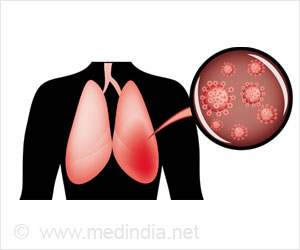“We recognize that a small percentage of people who are eligible for lung cancer screening through an annual low-dose CT scan are actually getting screening. Moreover, CT screening is not readily available in most countries. So, our goal, for many years, has been to develop a simple blood test that can be used first to determine need for screening and make screening for lung cancer that much more effective,” said Sam Hanash, M.D., Ph.D., professor of Clinical Cancer Prevention and leader of the McCombs Institute for the Early Detection and Treatment of Cancer. “Our study shows for the first time that a blood test could be useful to determine who may benefit from lung cancer screening.”
The USPSTF recommends that adults at high risk for lung cancer receive a low-dose CT scan each year, which was shown to reduce lung cancer deaths in the 2011 National Lung Screening Trial (NLST). The 2021 USPSTF criteria applies to adults age 50 to 80 who have at least a 20 pack-year smoking history and currently smoke or have quit within the past 15 years.
Hanash and colleagues developed a blood test incorporating biomarkers that they previously identified as predictive of lung cancer risk. A multicenter team used a blinded study to evaluate the performance of this four-protein marker panel in combination with the PLCOm2012 model, which was independently developed and validated to predict a six-year risk for lung cancer among individuals who currently smoke or smoked formerly.
“When we began work on a blood test, there were many different types of markers,” Hanash said. “We’ve done multiple analyses over the past decade to come up with a cost-effective test that’s simple, yet robust, which has been the guiding principle of our research.”
To test the combination of blood markers with the PLCOm2012 model, the researchers analyzed more than 10,000 biospecimens from the PLCO study, including 1,299 blood samples collected from 552 individuals who developed lung cancer and 8,709 samples collected from 2,193 people who did not develop lung cancer.
Among individuals with at least a 10 pack-year smoking history, the combined blood test with PLCOm2012 model showed overall improved sensitivity (88.4% versus 78.5%) and improved specificity (56.2% versus 49.3%), compared to the current USPSTF criteria. If implemented, the combined personalized risk assessment would have identified 105 of the 119 people in the PLCO intervention arm who received a lung cancer diagnosis within one year.
“A blood test would identify people who could benefit from lung cancer screening but are not eligible today,” Hanash said. “Tens of millions of people worldwide could benefit from lung cancer screening. If you can improve screening eligibility by even 5%, that is incredibly impactful.”
While the blood test could be implemented as a lab-developed test in the near future, Food and Drug Administration approval likely would require evaluation through a prospective clinical trial.
The study was supported by the National Institutes of Health and National Cancer Institute (U01CA194733, U01CA213285, U24CA086368, U01 CA200468), the Cancer Prevention & Research Institute of Texas and Lyda Hill Philanthropies. Additional research support was provided by the Lung Cancer Moon Shot®, part of MD Anderson’s Moon Shots Program®, a collaborative effort designed to accelerate the development of scientific discoveries into clinical advances that save patients’ lives.
Source: Eurekalert



